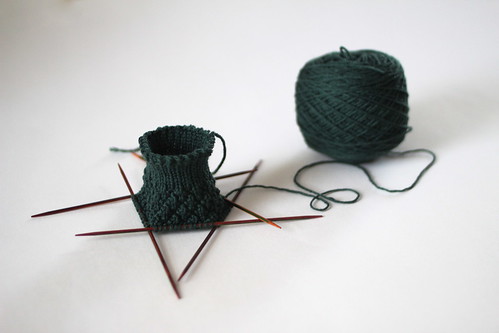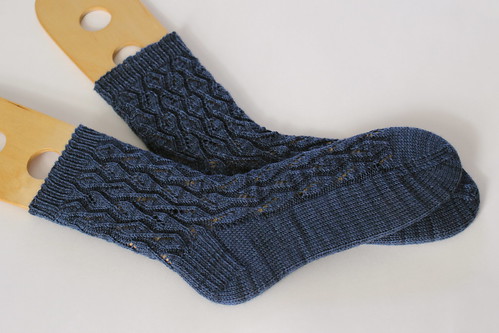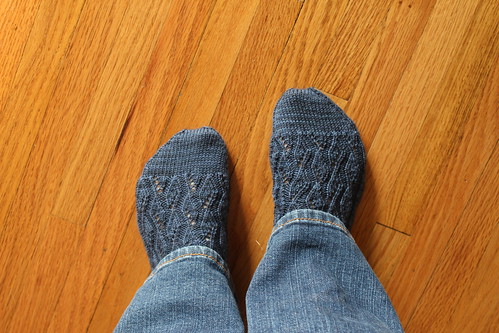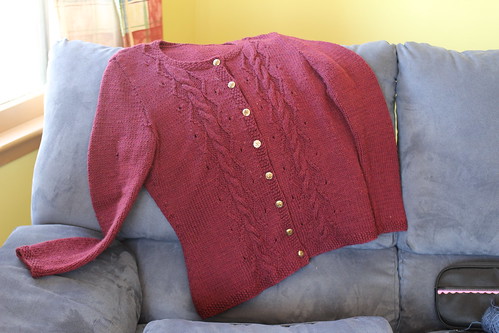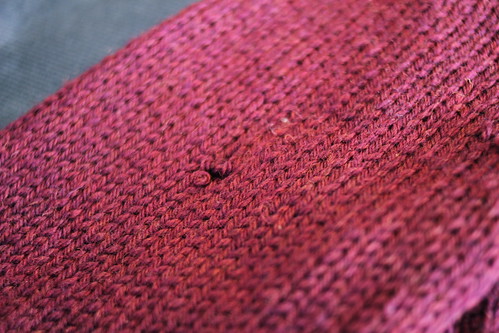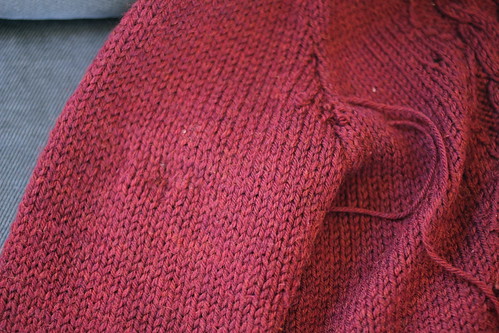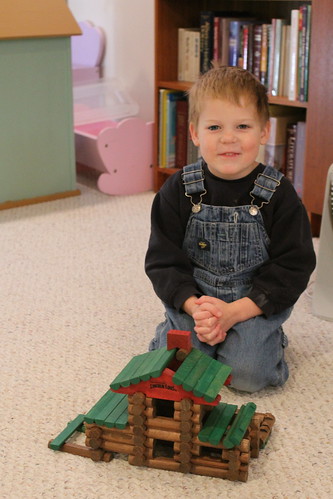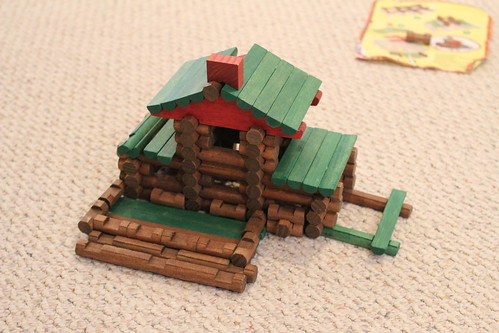Sign of Four
Sep 27th, 2012 by Tana
Yesterday I cast on a new pair of socks. I’m making socks for each of my kiddos this winter, and these are for Ben.
The pattern is Sign of Four by Anne Hanson, and it is delightful to knit. The pattern is worked over 4 sts and 8 rows, so it is easily customizable for children’s sizes. Ben’s socks are worked over 52 sts (improvised), and Joey’s were worked over 48 sts (per the pattern).
The yarn is Valley Yarns Huntington which seems to be a nice sock yarn. I wanted solid colors and I wanted something with 25% nylon or rayon for reinforcement. My kids are rough on socks – you don’t know how many times I’ve caught them walking on the front sidewalk in just their socks. They will only wear these to town, but just the same, I want them to be tough.
Ben’s are in the Forest colorway while Joey’s are Navy. The Navy yarn is so dark I couldn’t knit with it at night. I’ve never had yarn like that. The Forest doesn’t seem to be quite as dark as the Navy so hopefully I won’t be limited to knitting during daylight hours with it. I have to adjust the settings on my camera to overexpose the picture in order to capture any detail with both yarns, so we’ll see.
Joey’s socks were a very quick knit. I started them on September 15 and finished them on September 24, which I think is a personal record for knitting a single pair of socks. The pattern changes every two rows, so you have a change row and an even row, and then you have 8 rows to complete one set of diamonds, so it is easy to pick up and knit two rows when you have a minute here or there and it also keeps propelling you forward to finish the next set of diamonds. Granted, the socks are knit over 48 sts rather than the usual 64 and they are shorter as well, but I think even an adult version of this pattern would go very quickly.
I have knit socks for the boys only once, using self-striping yarn and plain St st, which kept things rolling along. With the solid yarn, plain St st or even simple ribbing would bore me out of my mind. In my search for yarn, I never came across a self-patterned yarn that really grabbed me, and I like solid colors anyway. If I was to knit a pattern, I needed to have something with a short repeat so I could make custom sizes, and most sock patterns I find interesting have longer repeats and aren’t appropriate for boys anyway. Anne Hanson {Knitspot} has a great selection of socks with short repeats that are boy-appropriate, so I have a wealth of options to draw from if I decide to make this an annual tradition.
